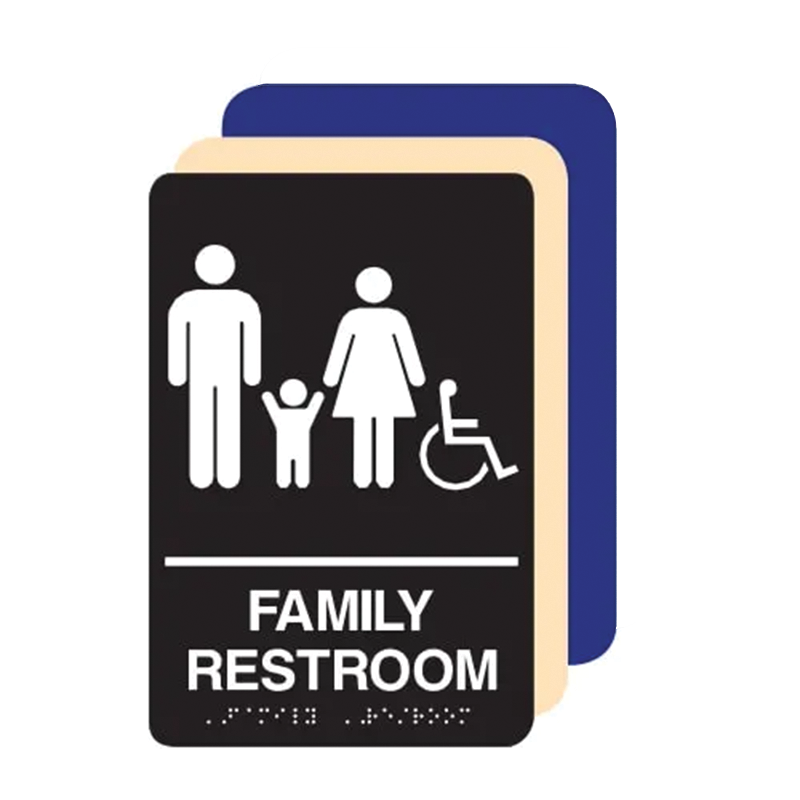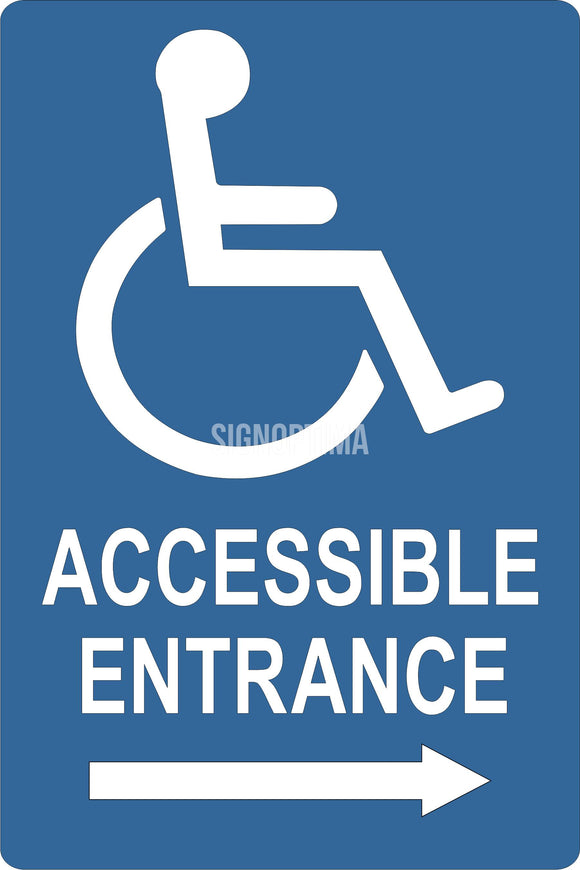Checking Out the Key Attributes of ADA Indicators for Improved Access
In the world of availability, ADA indicators function as quiet yet powerful allies, guaranteeing that areas are accessible and comprehensive for people with disabilities. By integrating Braille and responsive aspects, these indicators break obstacles for the visually damaged, while high-contrast shade systems and clear typefaces satisfy varied visual needs. Their calculated positioning is not approximate yet instead a computed initiative to assist in smooth navigating. Yet, past these functions lies a much deeper story about the advancement of inclusivity and the ongoing commitment to developing equitable areas. What extra could these indicators indicate in our search of universal access?
Importance of ADA Compliance
Ensuring conformity with the Americans with Disabilities Act (ADA) is important for cultivating inclusivity and equal accessibility in public rooms and work environments. The ADA, enacted in 1990, mandates that all public centers, employers, and transport services suit people with disabilities, guaranteeing they appreciate the same civil liberties and opportunities as others. Compliance with ADA criteria not just fulfills legal obligations yet likewise boosts a company's online reputation by showing its commitment to variety and inclusivity.
One of the essential elements of ADA compliance is the implementation of easily accessible signage. ADA indications are developed to make sure that individuals with impairments can quickly navigate through structures and rooms.
Additionally, adhering to ADA regulations can alleviate the danger of prospective penalties and lawful consequences. Organizations that fall short to adhere to ADA guidelines may deal with legal actions or charges, which can be both harmful and financially difficult to their public photo. Therefore, ADA compliance is indispensable to fostering an equitable environment for every person.
Braille and Tactile Elements
The consolidation of Braille and responsive components right into ADA signs personifies the principles of ease of access and inclusivity. It is generally positioned underneath the matching message on signs to make certain that people can access the info without visual support.
Responsive aspects prolong past Braille and include increased symbols and characters. These parts are created to be noticeable by touch, enabling people to identify space numbers, bathrooms, exits, and other crucial areas. The ADA establishes certain standards concerning the dimension, spacing, and positioning of these responsive components to optimize readability and guarantee uniformity throughout various atmospheres.

High-Contrast Color Design
High-contrast color pattern play an essential function in improving the presence and readability of ADA signage for people with visual problems. These schemes are essential as they maximize the difference in light reflectance in between text and history, making certain that indicators are conveniently discernible, also from a distance. The Americans with Disabilities Act (ADA) mandates using certain color contrasts to suit those with restricted vision, making it an important element of conformity.
The effectiveness of high-contrast shades hinges on their ability to stand apart in numerous lights problems, consisting of dimly lit environments and areas with glare. Commonly, dark text on a light background or light message on a dark history is employed to attain optimum comparison. For example, black message on a white or yellow background offers a raw visual difference that helps in fast recognition and comprehension.

Legible Fonts and Text Dimension
When thinking about the style of ADA signage, the choice of legible font styles and suitable text size can not be overstated. These elements are crucial for guaranteeing that signs are accessible to people with visual disabilities. The Americans with Disabilities Act (ADA) mandates that font styles have to be sans-serif and not italic, oblique, script, very ornamental, or of uncommon form. These demands help make certain that the text is conveniently understandable from a range and that the characters are distinguishable to diverse audiences.
The size of the message also plays a critical duty in ease of access. According to ADA guidelines, the minimal text height ought to be 5/8 inch, and it should boost proportionally with checking out distance. This is specifically essential in public rooms where signage demands to be reviewed promptly and properly. Uniformity in text dimension adds to a natural visual experience, aiding people in browsing settings successfully.
Moreover, spacing between lines and letters is important to clarity. Sufficient spacing prevents personalities from showing up crowded, improving readability. By sticking to these criteria, designers can substantially enhance ease of access, ensuring that signs serves its desired function for all individuals, no matter their aesthetic capacities.
Efficient Placement Techniques
Strategic placement of ADA signage is essential for maximizing access and guaranteeing conformity with lawful criteria. Correctly located signs guide people with impairments efficiently, assisting in navigation in public areas. Trick factors to consider include elevation, distance, and exposure. ADA guidelines stipulate that indicators ought to be placed at an elevation between 48 to 60 inches from the ground to guarantee they are within the line of sight for both standing and more seated individuals. This typical elevation variety is crucial for inclusivity, allowing mobility device users and people of varying heights to accessibility info effortlessly.
Furthermore, indicators need to be put surrounding to the lock side of doors to allow simple recognition prior to entry. Consistency in indication placement throughout a facility boosts predictability, decreasing confusion and improving total user experience.

Conclusion
ADA indications play an important function in advertising access by incorporating features that address the needs of individuals with impairments. Including Braille and responsive elements makes certain important details is accessible to the aesthetically impaired, while high-contrast color pattern and legible sans-serif font styles enhance exposure throughout different lighting conditions. Reliable positioning methods, such as appropriate mounting elevations and strategic locations, better assist in navigation. These aspects collectively foster a comprehensive setting, emphasizing the value of ADA compliance in ensuring equal access for all.
In the realm of access, ADA indicators offer as quiet yet effective allies, making certain that rooms are inclusive and navigable for people with handicaps. The ADA, passed in 1990, mandates that all public facilities, employers, straight from the source and transport solutions fit people with disabilities, guaranteeing they enjoy the same rights and opportunities as others. ADA Signs. ADA indications are designed to make sure that people with specials needs can conveniently browse via areas and structures. ADA standards stipulate that signs ought to be mounted at learn the facts here now a height between 48 to 60 inches from the ground to ensure they are within the line of view for both standing and seated people.ADA indicators play an important function in advertising accessibility by integrating features that deal with the demands of individuals with specials needs